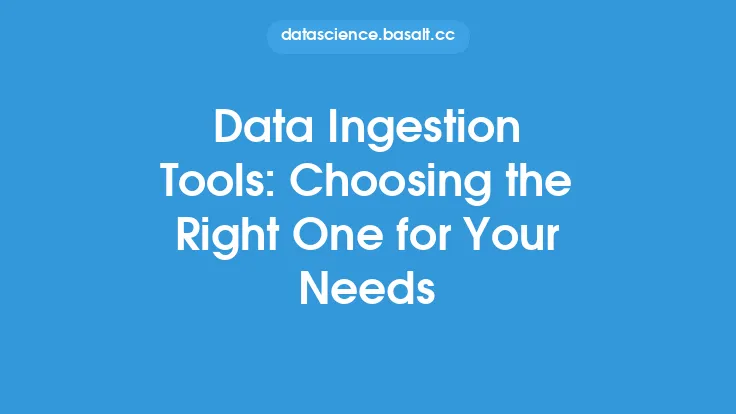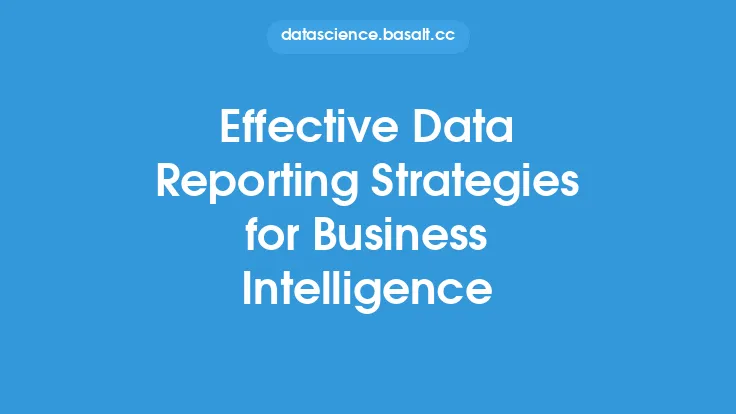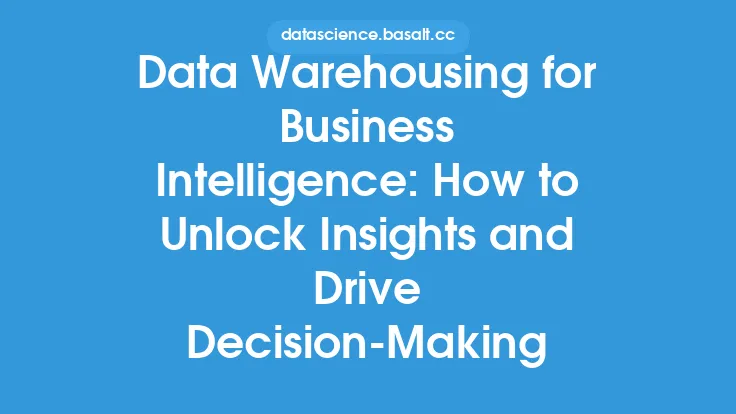In today's fast-paced business environment, organizations are constantly adapting to changing market conditions, customer needs, and technological advancements. As a result, their data pipelines must be flexible enough to accommodate these changes and provide timely, accurate, and relevant insights to support informed decision-making. A flexible data pipeline is one that can be easily modified, extended, or reconfigured to meet evolving business requirements, without requiring significant re-architecture or re-development.
Introduction to Flexible Data Pipelines
A flexible data pipeline is designed to be modular, scalable, and adaptable, allowing it to respond quickly to changing business needs. This is achieved through the use of modular components, standardized interfaces, and a robust architecture that can accommodate new data sources, processing requirements, and output formats. By building flexible data pipelines, organizations can reduce the time and effort required to respond to changing business needs, improve data quality and accuracy, and increase the overall efficiency of their data workflows.
Key Characteristics of Flexible Data Pipelines
Several key characteristics are essential for building flexible data pipelines. These include:
- Modularity: The ability to break down the pipeline into smaller, independent components that can be easily modified, replaced, or extended.
- Standardization: The use of standardized interfaces, data formats, and processing protocols to facilitate integration and interoperability between different components.
- Scalability: The ability to handle increasing volumes of data, user traffic, or processing requirements without compromising performance or reliability.
- Configurability: The ability to easily configure pipeline components, processing rules, and output formats to meet changing business requirements.
- Reusability: The ability to reuse pipeline components, code, and configurations across different pipelines, projects, or applications.
Designing Flexible Data Pipelines
Designing flexible data pipelines requires a deep understanding of the business requirements, data sources, processing needs, and output formats. The following design principles can help:
- Separate data ingestion, processing, and output: Use separate components or modules for data ingestion, processing, and output to improve modularity and scalability.
- Use standardized data formats and interfaces: Adopt standardized data formats, such as JSON or Avro, and interfaces, such as REST or Apache Beam, to facilitate integration and interoperability.
- Implement data processing as a series of micro-batch or streaming tasks: Use micro-batch or streaming processing to handle high-volume, high-velocity data streams and improve real-time insights.
- Use metadata management and data cataloging: Implement metadata management and data cataloging to improve data discovery, lineage, and governance.
Technologies for Building Flexible Data Pipelines
Several technologies can help build flexible data pipelines, including:
- Apache Beam: A unified programming model for both batch and streaming data processing.
- Apache Spark: A fast, in-memory data processing engine for batch and streaming workloads.
- Apache Kafka: A distributed streaming platform for high-throughput, fault-tolerant data processing.
- Cloud-based data integration platforms: Such as AWS Glue, Google Cloud Data Fusion, or Azure Data Factory, which provide pre-built connectors, workflows, and data processing capabilities.
- Containerization and orchestration tools: Such as Docker, Kubernetes, or Apache Mesos, which provide a flexible, scalable, and portable way to deploy and manage data pipeline components.
Best Practices for Building Flexible Data Pipelines
To build flexible data pipelines, follow these best practices:
- Keep it simple and modular: Avoid complex, monolithic architectures that are difficult to modify or extend.
- Use standardized components and interfaces: Adopt standardized components, interfaces, and data formats to improve integration and interoperability.
- Implement automated testing and validation: Use automated testing and validation to ensure pipeline components and workflows are correct, complete, and functioning as expected.
- Monitor and optimize pipeline performance: Continuously monitor pipeline performance, identify bottlenecks, and optimize processing workflows to improve efficiency and reduce latency.
- Document and manage pipeline metadata: Implement metadata management and data cataloging to improve data discovery, lineage, and governance.
Conclusion
Building flexible data pipelines is essential for organizations that need to respond quickly to changing business requirements, improve data quality and accuracy, and increase the overall efficiency of their data workflows. By designing modular, scalable, and adaptable pipelines, using standardized components and interfaces, and implementing automated testing and validation, organizations can create flexible data pipelines that meet their evolving needs and provide timely, accurate, and relevant insights to support informed decision-making.





